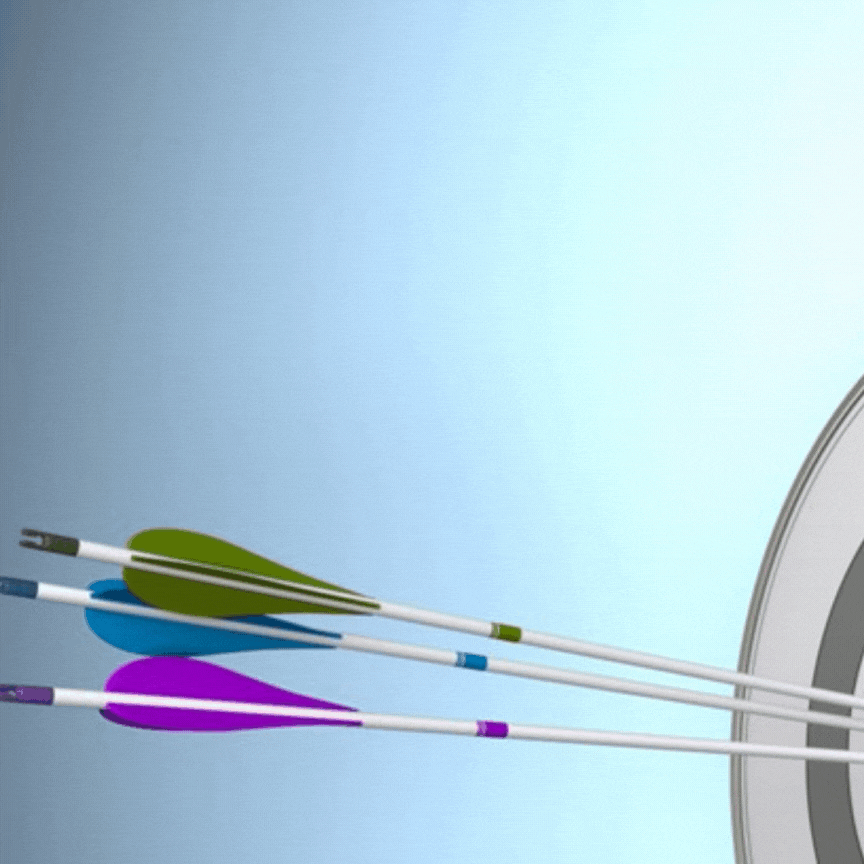
About Applying Atomic Habits to Fitness
The Atomic Habits theory, developed by James Clear, is a scientifically backed approach to creating habits that stick and become a part of our daily routine. According to this theory, small habits done consistently over time can lead to big results.
Here’s how you can use the Atomic Habits theory to create new habits related to exercise and physical activity:
- Start with a clear identity: our habits are partly a reflection of our identity. Therefore, the first step in creating a new habit is to identify the type of person you want to be and align your actions with that identity. If you want to be a person who is physically active, you need to start doing things that people who are physically active do. Believe it as a part of you.
- Make it small and easy: The idea behind making a habit small and easy is to create a habit that is sustainable. A habit you can do consistently, even when you don’t feel like it. So, start small and make the habit so easy that you can do it every day without much thought.
- Create a cue: A cue is a trigger that reminds you to start your habit. This can be a time, a place, a person, or an event. The key is to have a consistent cue that triggers your habit every day.
- Create a reward: A reward is something that reinforces the habit and makes it more likely to stick. It can be anything that you enjoy and motivates you to continue the habit.
- Make it a non-negotiable: A key part of the Atomic Habits theory is that you need to make your habit non-negotiable. This means that you do the habit every day, no matter what. If you miss a day, start again the next day.
- Track your progress: Keeping track of your progress is a great way to stay motivated and see the progress you’re making. Use a journal, a habit tracker, or an app to track your progress and see how far you’ve come.
- Surround yourself with people who support your goals: Having a support system is critical to the success of any habit. Surround yourself with people who support your goals and who will encourage and motivate you to keep going.
Let’s dive deeper in to each.
Start with clear identity
“Start with clear identity” refers to the idea that your habits should align with your values and beliefs. This means you should define who you want to be and what kind of person you want to become, and then make your habits fit that identity. This concept is particularly important in developing fitness habits because it helps you stay motivated and focused on your goals.
For example, if you define yourself as a healthy and fit person, then you would be more likely to make exercise and healthy eating a priority in your daily routine. You would also be less likely to make excuses or skip workouts because those actions go against your identity as a healthy person. On the other hand, if you don’t have a clear identity, it’s easy to become unmotivated and fall back into old habits.
To apply this concept of atomic habits to a fitness program, it’s important to start by defining your fitness goals and identifying what kind of person you want to become. This could be a person who is strong, energetic, and confident, for example. Then, make sure your habits and routines align with this identity. Make time for regular exercise, focus on healthy eating, and prioritize rest and recovery.
By making your fitness habits align with your clear identity, you’ll be more likely to stick to your goals and achieve the results you want. This approach can also help you avoid burnout and stay motivated even when things get tough. Citing evidence, a study published in 2021 found that individuals who had a strong sense of identity and self-efficacy were more likely to engage in physical activity and stick to their exercise routines.
Another study shows when people are internally motivated to exercise, they are more likely to do it. This is especially true if you believe you are a fit person inside. You are just doing what you want to do. Additionally, if you have exercised before, it’s a good indicator you will continue to exercise regularly.
The concept of starting with a clear identity is a powerful tool for developing and maintaining fitness habits. By defining your goals and values and making sure your habits align with your identity, you can stay motivated and achieve your fitness goals.
Making it small and easy
The principle of making it small and easy is key to success. This principle states that small, incremental changes are more likely to become ingrained as habits than large, sudden changes. When it comes to developing fitness habits, this principle is especially important. Starting small and easy can help individuals overcome the common barriers to exercise such as lack of time, energy, or motivation.
One example of applying this principle in a fitness program is by starting with a small and manageable amount of exercise time. For instance, instead of aiming to exercise for an hour every day, an individual can start with just 5 minutes of exercise each day and gradually increase the duration over time. This gradual approach makes the task of exercising seem less daunting and more achievable, reducing the risk of burnout or discouragement.
Another way to make fitness habits small and easy is by setting achievable goals. For example, instead of setting a goal to run a marathon, an individual can start with a goal to run a 5K and gradually increase the distance over time. This gradual approach helps to build confidence, increase motivation, and keep the individual engaged in the fitness program.
Additionally, breaking down the fitness program into smaller, more manageable tasks can also help make it small and easy. For example, instead of trying to change all aspects of an individual’s diet and exercise routine at once, you can focus on making one small change at a time, such as drinking more water or adding a 10-minute walk to your routine. This gradual approach helps make lasting changes to your lifestyle without feeling overwhelmed.
Create a cue
Creating a cue is one of the most important steps in developing fitness habits, as it helps to trigger the behavior you want to adopt. The cue one way to creating an automatic behavior–as it serves as a reminder to perform the desired action. A cue can be anything from a physical object, such as a gym bag, to a routine, such as drinking a glass of water after waking up in the morning.
When it comes to developing fitness habits, there are several ways to create a cue that will help trigger the desired behavior. For example, you can associate your workout with a certain time of day, such as going to the gym after work. Or create the association with a certain activity, such as going for a run after dinner. Another effective way to create a cue is to make your workout routine a part of your daily routine.
Having a clear cue in place can help to overcome the resistance that can come with adopting a new behavior. For example, if you associate your workout with a certain time of day, you are less likely to miss a workout session, as the cue will serve as a reminder to get up and get moving. Additionally, having a cue in place can help to build momentum and make it easier to develop a habit.
Cues can also be adjusted as needed. So, if your original cue doesn’t seem to be working, you can experiment with different triggers until you find one that works for you. For example, if you find that you are missing your workout sessions, you can try changing the time of day you go to the gym. Or, find a different activity to associate with your workout.
Overall, creating a clear cue is an important step in developing fitness habits. It helps to overcome resistance, build momentum, and trigger automatic behavior. Whether it’s associated with a time of day, an activity, or a routine, a well-defined cue can help to make your workout routine a habit that becomes a natural part of your daily routine.
Create a reward
The concept of creating a reward is an essential component of developing and maintaining habits, including fitness habits. The idea behind this principle is to provide positive reinforcement for a behavior, which reinforces the desired behavior and makes it more likely to occur in the future. According to James Clear, rewards are a part of developing habits because they create a positive feedback loop that makes the desired behavior more appealing.
There are several types of rewards that can be used to encourage fitness habits. Some examples include:
- Tangible rewards: These are physical rewards that can be seen and touched, such as a new pair of sneakers, a massage, or a special treat.
- Intrinsic rewards: These are emotional rewards that come from within, such as a sense of accomplishment, increased confidence, or improved self-esteem.
- Social rewards: These are rewards that come from others, such as recognition, praise, or support from friends and family.
- Leisure rewards: These are rewards that stimulate the release of dopamine, which is a chemical in the brain that is associated with pleasure and motivation. Examples of dopamine rewards include listening to music, watching a funny video, or taking a relaxing bath.
When creating a reward system for a fitness program, it’s important to choose rewards that are meaningful and enjoyable. For example, if someone enjoys spending time outdoors, a reward for meeting their fitness goals might be a picture framed from the activity. Or, if someone is motivated by tangible rewards, they might choose to treat themselves to a new piece of fitness equipment after meeting their goals.
It’s also important to keep the rewards achievable and relevant to the goal. If your goal is to lose fat, for example, a reward of an all-you-can-eat buffet might not be the best choice. Instead, a reward such as a new outfit that fits well or a spa day might be more appropriate.
Incorporating rewards into a fitness program is a critical component of developing and maintaining habits. By choosing rewards that are meaningful and enjoyable, and making sure they are achievable and relevant to the goal, people can create a positive feedback loop that reinforces their desired behavior and makes it more likely to occur in the future.
Make it non-negotiable
Making physical activity a non-negotiable part of your daily routine is a crucial aspect of developing a sustainable fitness habit. This means that exercise should be prioritized as an essential part of one’s day and should not be subject to compromise or cancellation. This principle is based on the idea that habits are most successful when they become automatic and are no longer a conscious decision.
One way to make exercise non-negotiable is to schedule it as a recurring appointment in one’s calendar. This ensures that physical activity is treated with the same level of importance as other appointments or responsibilities. It also helps to establish a routine and establish the habit of exercise. Another way is to make it part of one’s morning or evening routine, so it becomes a natural and automatic part of the day.
Another important factor is to create accountability. This can be achieved by finding a workout partner, hiring a personal trainer, or joining a fitness group. When people are held accountable for their fitness goals, they are more likely to prioritize physical activity and make it a non-negotiable part of their day.
Making physical activity a non-negotiable part of one’s routine is a critical step in developing a sustainable fitness habit. By scheduling exercise as a recurring appointment, incorporating it into daily routines, and creating accountability, you can prioritize exercise and make it a natural and automatic part of your life.
Track your progress
Tracking your progress helps to reinforce the behavior and provides an objective measure of progress. By tracking progress, you can see the tangible results of your hard work–which can increase motivation and self-efficacy.
In the context of fitness, tracking progress can mean a number of things. For example, it can involve recording the number of reps performed, the weight lifted, the distance covered, or the time spent working out. This information can be tracked in a journal, spreadsheet, or fitness app, and it can be used to set goals, track progress, and monitor improvements over time.
Another way to track progress is through regular assessments. For instance, body measurements such as weight, body fat percentage, and waist circumference can be taken regularly to monitor changes in body composition. These assessments can provide valuable insights into the effectiveness of the fitness program and help to identify areas that need improvement.
Tracking progress is important because it helps to build momentum. As you see progress over time, you become more confident in your ability to stick to the program and continue making progress. This sense of accomplishment can help to build momentum and sustain motivation, which is key to developing long-term habits.
Tracking progress also allows you to make adjustments to your program as needed. For example, if progress is slow, you can increase the intensity or frequency of their workouts to see if this leads to better results. On the other hand, if progress is too rapid, you may need to take a step back to avoid injury or burnout. A good rule of thumb to consider regarding the adjustment changes is to not to exceed a 5% increase.
Surround yourself with people who support your goals
The importance of social support cannot be overstated. Surrounding yourself with people who support your goals can have a positive impact on your motivation and help you stay on track. When we have people around us who are also working towards similar goals, we are more likely to stay accountable and motivated.
For example, if you want to start a regular exercise routine, finding a workout buddy or joining a fitness class can provide the motivation and accountability you need to stick with it. Studies have shown that people who work out with a partner are more likely to increase how much they exercise (Rackow, Pamela. 2015). You are also more likely to do exercise if you know other people exercise too (Aral & Nicolaides, 2017).
In addition to working out with a partner, joining a fitness group or online community can also provide support and accountability. These groups can offer encouragement, advice, and a sense of community. For example, if you are working towards a fitness goal, you can post your progress and receive support and encouragement from others in the group.
Another way to surround yourself with people who support your fitness goals is to find a coach or mentor. A coach or mentor can provide guidance, advice, and accountability. They can also help you stay motivated and on track when things get tough. For example, a personal trainer can provide a customized workout plan and help you stay motivated to reach your fitness goals.
The Atomic Habits theory offers practical steps for creating and maintaining new habits. Starting with a clear identity, making the habit small and easy, creating a cue and reward, making it non-negotiable, tracking progress, and surrounding yourself with a supportive community are all essential elements to establish lasting habits. By implementing these strategies, you can shift their behavior and become the person you want to be. Remember, habits are a reflection of our identity, and small consistent changes can lead to significant results in the long run.
References:
Clear, James. “Atomic Habits: An Easy & Proven Way to Build Good Habits & Break Bad Ones”. Avery, 2018.
Gjestvang, Christina, et al. “What Makes Individuals Stick to Their Exercise Regime? A One-Year Follow-Up Study Among Novice Exercisers in a Fitness Club Setting.” Frontiers in Psychology, vol. 12, 2021, https://www.frontiersin.org/articles/10.3389/fpsyg.2021.638928. DOI: 10.3389/fpsyg.2021.638928.
Teixeira PJ, Carraça EV, Markland D, Silva MN, Ryan RM. Exercise, physical activity, and self-determination theory: a systematic review. Int J Behav Nutr Phys Act. 2012 Jun 22;9:78. doi: 10.1186/1479-5868-9-78. PMID: 22726453; PMCID: PMC3441783.
Pamela Rackow, Urte Scholz, Rainer Hornung. Received social support and exercising: An intervention study to test the enabling hypothesis. British Journal of Health Psychology, 2015; 20 (4): 763 DOI: 10.1111/bjhp.12139
Aral, S., Nicolaides, C. Exercise contagion in a global social network. Nat Commun 8, 14753 (2017). https://doi.org/10.1038/ncomms14753









